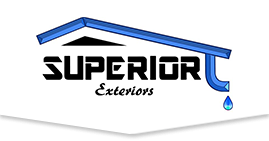Why You Should Get a Roofing Services Inspection
Roofing inspections are a common part of home insurance policies and are recommended at least once a year. However, you should know that these inspections do not come for free. In fact, you will pay for the service, so be prepared to spend a few hundred dollars. But there are several important benefits to a professional inspection. Here are some of them. In addition to protecting your home’s roof, they can ensure that your insurance company covers any necessary repairs. Click for more
Roof inspections are part of your home insurance policy
Many insurance companies require that you get your roof inspected before they give you a policy. These inspections may be included in the renewal process or when you’re applying for a new policy. If you don’t pass the inspection, you’ll likely be denied the renewal of your policy. In these situations, getting a roof inspection is a good idea. It helps prevent unnecessary damage to your roof that could lead to costly repair bills.
Your home insurance policy will require that you get a roof inspection every couple of years. The inspector will look for deterioration and any leaks in the roof that would result in water damage in the house. Your roof’s shape can affect its ability to resist extreme weather. A hip roof is the most common shape and helps protect the house from snow and high winds. A roof inspection will determine whether or not your roof needs to be replaced.
They are recommended once per year
A roof requires specialized maintenance. Left unchecked, it will deteriorate and become very expensive. Roof inspections will spot small problems before they get out of hand and cause more extensive damage. An inspector will also find cracks and moss growing on the roof. They can also determine if the shingles are losing their luster. A roof inspection will also help you to avoid costly repair bills.
As a homeowner, you should have your roof inspected at least once a year, or more frequently if you live in an area with extreme weather conditions. Getting your roof inspected is especially important when you’re selling your home or considering selling it. Although there is no set schedule for roofing inspections, a professional should inspect your roof at least once a year for any damage. Depending on the type of roof you have, an inspection may only take a few minutes. For asphalt shingle roofs, you’ll need to schedule a roof inspection once every three years. Tile and metal roofs, on the other hand, can go longer between inspections. Living in an area with heavy rain or snow can wear down your roof faster.
They determine the lifespan of a roof
A roof’s lifespan is determined by several factors, including its design, materials, and installation. Other factors are its climate, the quality of the installation, and how well the roof is maintained. In addition to the material used, the life expectancy of a roof is affected by extreme temperatures and severe weather conditions. Listed below are some factors that influence a roof’s lifespan. Knowing the average lifespan of a roof will help you make an informed decision about the roof on your home.
Although there is no single way to determine the lifespan of a roof, most types will last at least 15 years. A good rule of thumb is that your roof should be replaced when it has reached the end of its lifespan. However, this estimate is just a general guideline and should not be used as a precise scientific formula. There are several ways to improve the lifespan of a roof and extend its usefulness.
They aren’t free
While you may be tempted to accept a “free” inspection offer from a prospective roofing company, you should be wary of the scams. These inspections are usually only limited to the roof and may raise the final bill if the roofer discovers any problems. Moreover, free inspections are generally not done by a licensed roofing contractor and are not always thorough. Moreover, you shouldn’t accept unsolicited inspection offers as these are usually bogus or simply home insurance company agents.
While a free roof inspection is helpful for estimating repair costs, you should remember that it’s a marketing gimmick. In reality, it’s a scam to get you to spend money on a service that you’ll ultimately end up hating. Free inspections are unreliable and will often mislead you. Further, your insurance company will likely reject these reports, so you should always spend the money to get a professional inspection.
They aren’t trustworthy
It’s possible to get a free roof inspection, but beware of scams! Most “roofers” are just a ruse, and will only offer to inspect your roof if you pay for the inspection. They won’t have any specific knowledge about the condition of your roof and will most likely not be able to answer your questions. Roofing scams are common, especially after powerful storms.
A simple Google search will tell you whether the contractor you’re considering is legitimate. A reputable roofing company will have several online sources recognizing them. Beware of the ones without a website. These contractors are probably just starting out and are trying to hide something. Don’t trust a person or business you don’t know to give you a good roof. If a roofing contractor has no website, you should avoid them.
They cost money
Roofing services inspections cost money. The cost of an inspection depends on the type of roof and its slope. If your house is too steep, the inspector may have to use a drone or infrared technology to check the roof. Sloped roofs may require additional time and cost more. A smaller house will likely only cost around $75-$400, while a large house may cost as much as $1000.
There are a few types of roof inspections, including a physical inspection and a thermal roof inspection. The cost for a physical inspection will range from $75 to $250, depending on the scope of the inspection. The inspector will climb the roof to check for leaks and cracks and will probably check for worn or cracked flashing. They may also check the interior of the attic for water spots and air leaks. Whether you need a physical inspection or an infrared one is up to you. Click Here


